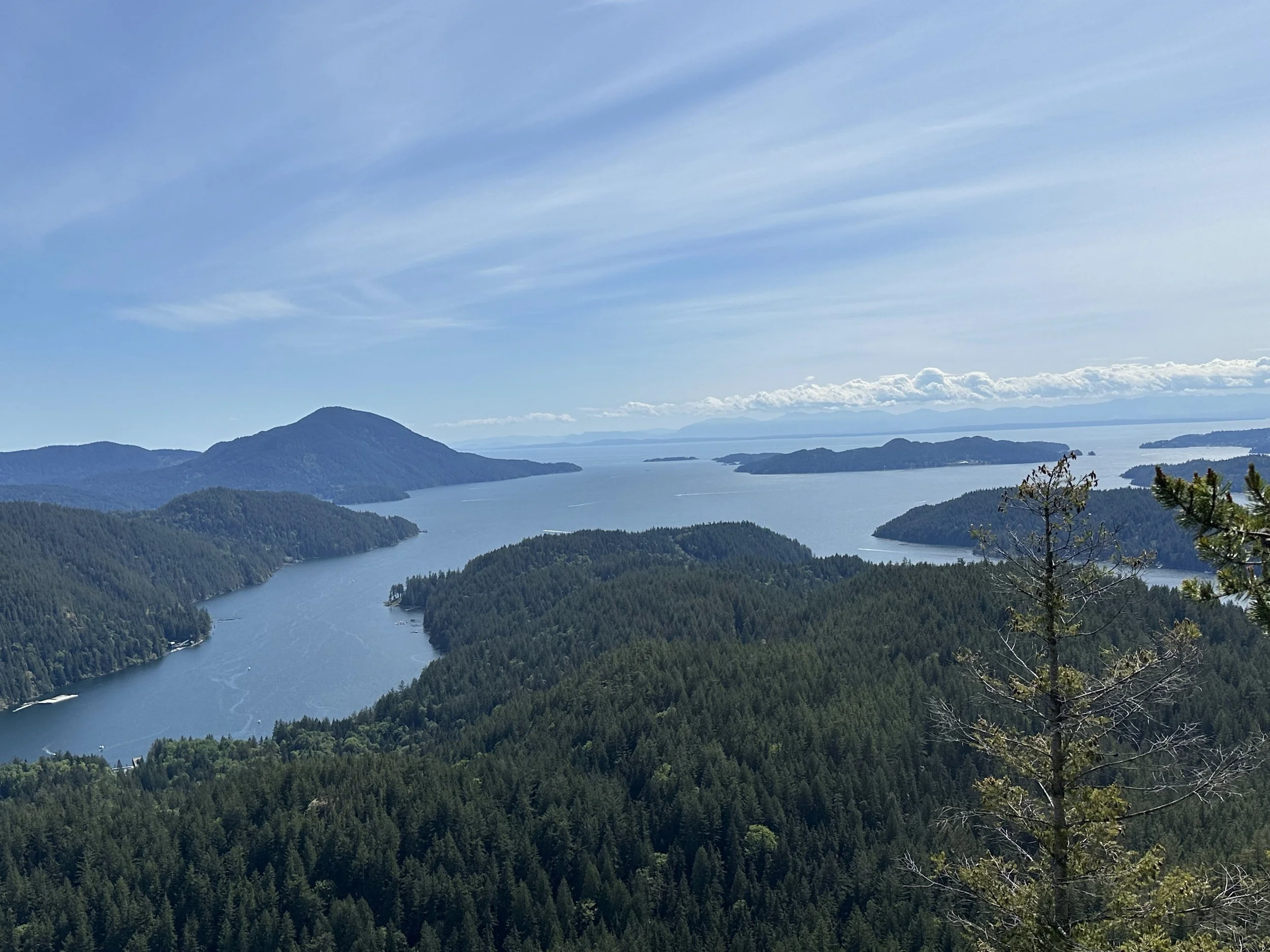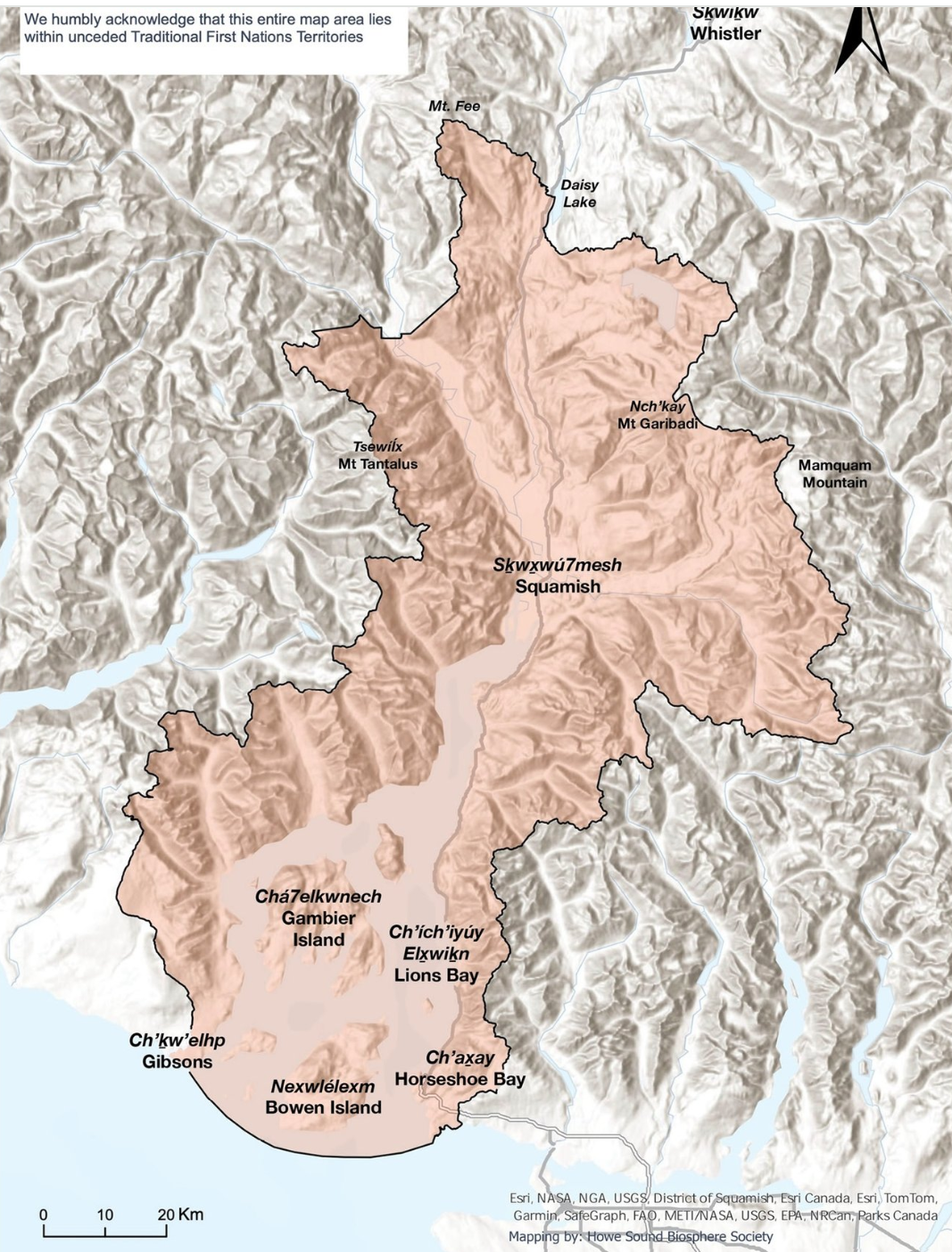West Van’s UNESCO Biosphere Region: balancing people and nature
Átl'ḵa7tsem / Howe Sound from Burt’s Bluff on Gambier Island
You may not be aware that West Vancouver is part of a UNESCO (United Nations Educational, Scientific and Cultural Organization ) Biosphere Region. In 2021, the Átl'ḵa7tsem / Howe Sound region joined a select group of around 750 other unique areas worldwide in becoming a UNESCO-designated biosphere reserve. In UNESCO’s words, these sites are ”learning places for sustainable development. They are places that provide local solutions to global challenges.”
Now known as the Átl'ḵa7tsem / Howe Sound UNESCO Biosphere Region, it is only the 19th in Canada and third in BC. The region covers 2,000 square kilometres from alpine peak to seabed. It takes in most of Átl'ḵa7tsem / Howe Sound’s watershed, from West Vancouver’s Cypress Creek, north toward Black Tusk, across the Tantalus Range and south to Chaster Creek outside of Gibsons.
Appreciative of the fragile recovery of the marine realm in Átl'ḵa7tsem / Howe Sound after decades of industrial harm, advocates saw the UNESCO Biosphere framework as a viable option for helping to ensure the environmental recovery continues. In short, this was seen as a route to aspire to creating balance between people and nature.
The Howe Sound Biosphere Region Initiative Society is responsible for the ongoing management of the work to maintain the UNESCO designation. You can learn more about West Vancouver’s unique UNESCO Biosphere Region at howesoundbri.org.


